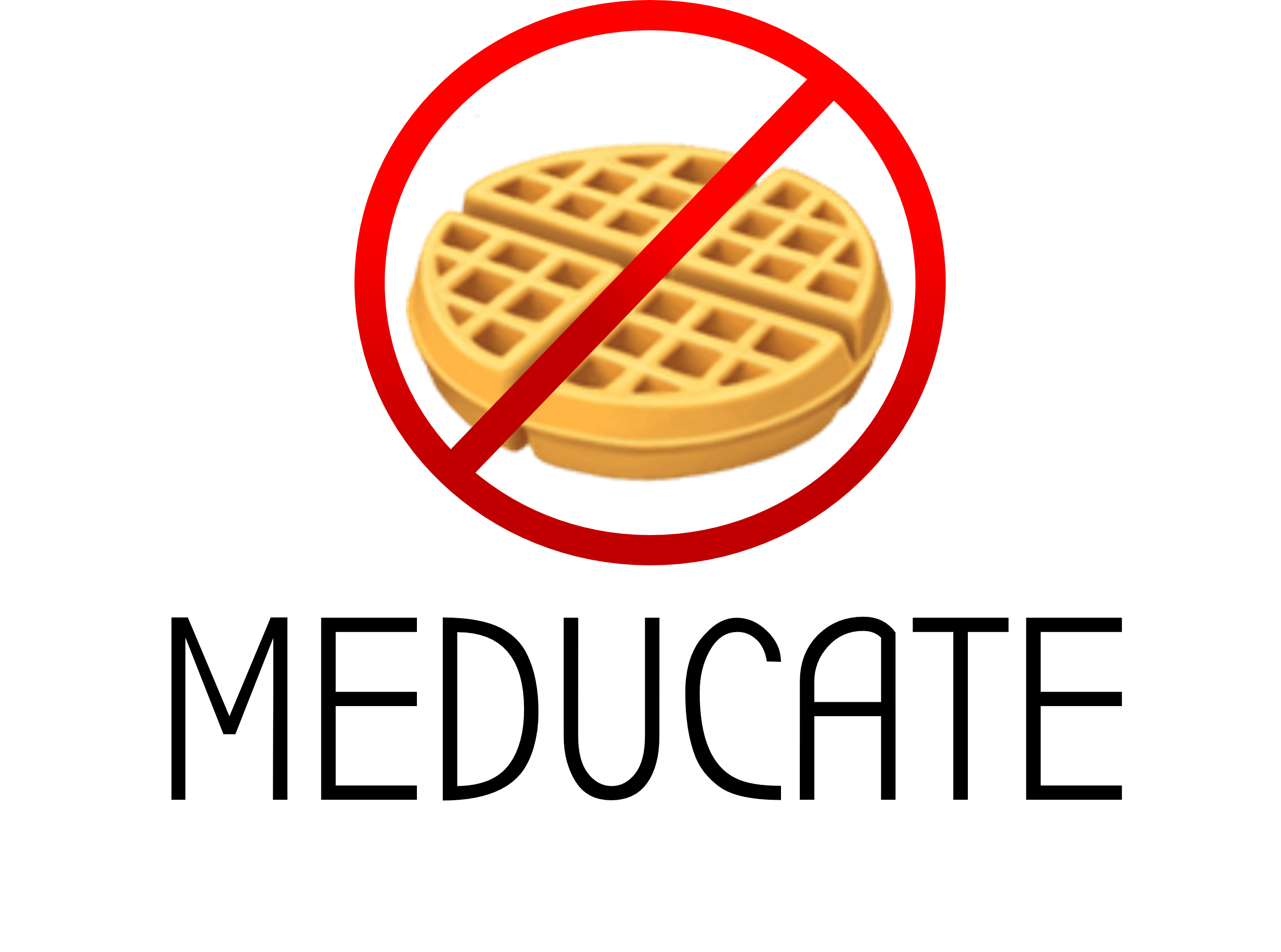 Notes: nsb disorders of movement
Notes: nsb disorders of movement
Similar resources:
- All
- Lecture Notes
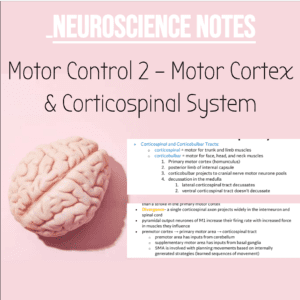
NSB Neuroscience Notes: Motor Control 2
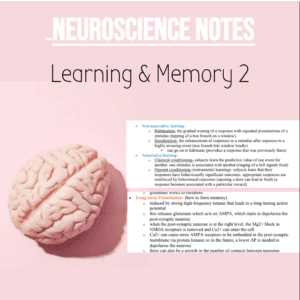
NSB Neuroscience Notes: Learning & Memory 2
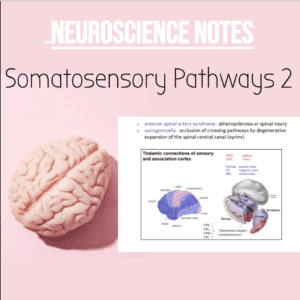
NSB Neuroscience Notes: Somatosensory System 2
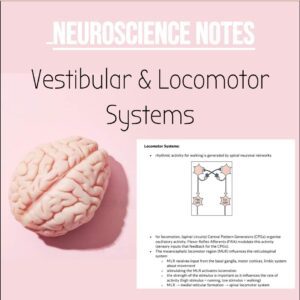
NSB Neuroscience Notes: Vestibular & Locomotor Control

NSB Neuroscience Notes: Sensory Transduction & Receptors

NSB Neuroscience Notes: Pain
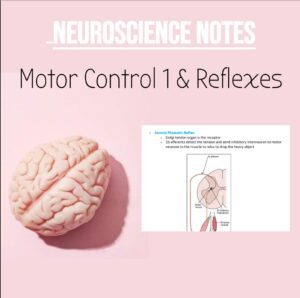
NSB Neuroscience Notes: Motor Control & Reflexes
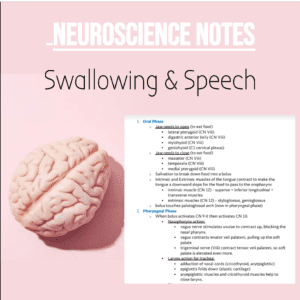
NSB Neuroscience Notes: Swallowing & Speech
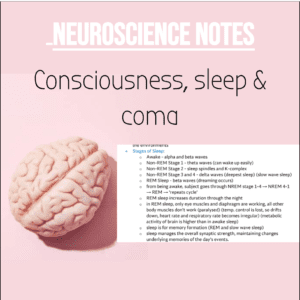
NSB Neuroscience Notes: Consciousness, Sleep and Coma
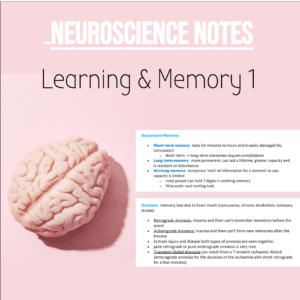
NSB Neuroscience Notes: Learning & Memory
Y2, Y2Notes, Y2 NSB, Neuro Notes, Neuroscience, Christopher Yeo, Chris Yeo, NSBNeuro , NSBMovement
N&B Neuroscience: Motor Control 4 –
Disorders of Movement
• Spasticity- resistance to movement unidirectional (velocity dependent)
• Rigidity- resistance to movement bidirectional (not velocity dependent)
• Ataxia- loss of co-ordination in the action of muscles
• Akinesia- no movement
• Hypokinesia- reduced movement
• Hyperkinesia- excessive movement
• Apraxia- loss of purposeful movement (loss of motor planning)
• Weakness- movements lack force and are tiring to make
o immediate loss or change = stroke or physical trauma
o slow progressing signs indicates a tumour
• UMN lesions enhance reflexes because there is damage to the corticospinal
tract that stimulates the inhibitory interneuron.
o the damaged corticospinal tract cannot stimulate the inhibitory
interneuron, so the reflex still continues = brisk reflexes.
• lacunar stroke- stroke in the posterior limb of the internal capsule
o thrombosis, embolism, haemorrhage of small, penetrating arteries
o pure motor stroke, affecting the entire contralateral side of the body
(hemiplegia)
N&B Neuroscience: Motor Control 4 –
Disorders of Movement
Basal Ganglia Disorders:
• hyperkinesia- excess movement
o chorea- continued rapid, jerky movements that are fragments of
purposeful movements
o athetosis- continued uncontrolled writhing
o dystonia- extreme contractions forcing unusual movements
o ballismus- jumping about
o tics- repeated, stereotyped fragments of movements + vocalisations
• hypokinesia- lack of movement
• no weakness
• no apraxia (can’t perform learned movements on command)
• extrapyramidal signs = basal ganglia injury. (Pyramidal signs=UMN)
Hyperkinetic:
• Ballism- degeneration of the subthalamic nucleus (leads to disinhibition of
movement via indirect pathway
o (hemiballismus= one side)
o due to degeneration of the subthalamic nucleus, there is no excitation to
globus pallidus internal, so no inhibition from GPi to the thalamus, so
there is excess thalamic drive, so excess movement
• Huntington’s Disease- degeneration of the striatum causes choreiform
movements. indirect pathway is mainly affected
o sudden, brief involuntary twitches all over the body
o voluntary movement slowed
o degeneration of the striatum (no D2 receptors for the indirect pathway).
This causes more inhibition from globus pallidus external to subthalamic
nucleus, so no excitation to GPi, so no inhibition of the thalamus, so
excess thalamic excitation, so excess movement
Hypokinetic:
• Parkinson’s Disease- degeneration of dopamine producing neurones in the
substantia nigra pars compacta. (low dopamine cannot promote movement and
inhibit the indirect pathway)
o bradykinesia (low levels of movement)
o resting tremor (pill-rolling)
o rigidity (cog-wheel rigidity)
o postural instability
o mask-face
o L-DOPA
o dopamine agonists
o monoamine oxidase-B inhibitors
N&B Neuroscience: Motor Control 4 –
Disorders of Movement
o Deep Brain Stimulation via electrodes into the basal ganglia can restore
thalamic excitability (surgery)
Cerebellar Control of Movement:
o flocculo-nodular lobe = balance and eye movements (nystagmus),
vestibulo-ocular reflex)
o vermis and pars intermedia = movement of body (sensitive to alcohol-
anterior vermis. ataxia of gait)
o cerebellar hemispheres = limb movement (limb ataxia, intention tremor-
greatest at the end of a movement)
